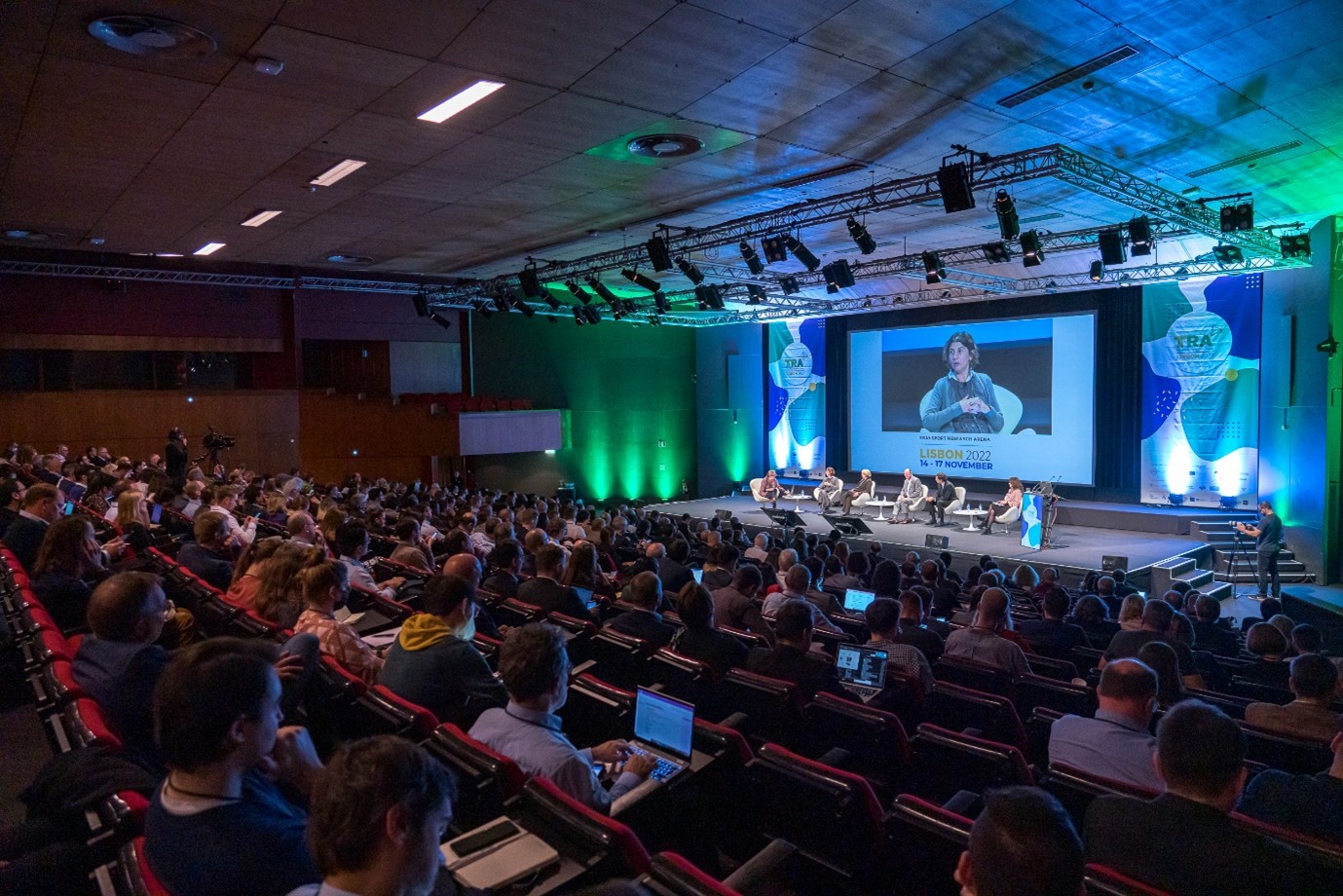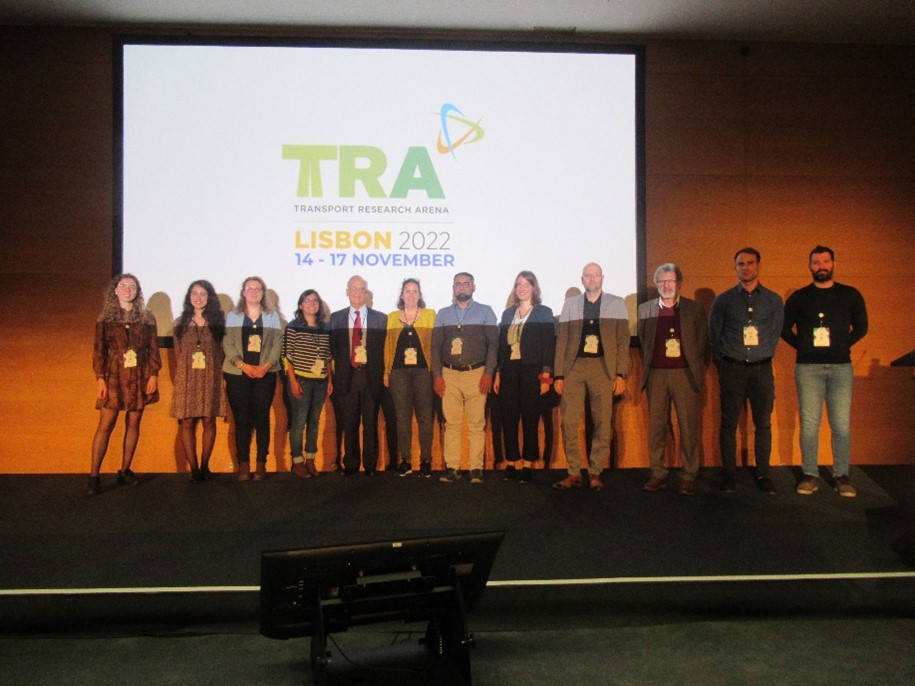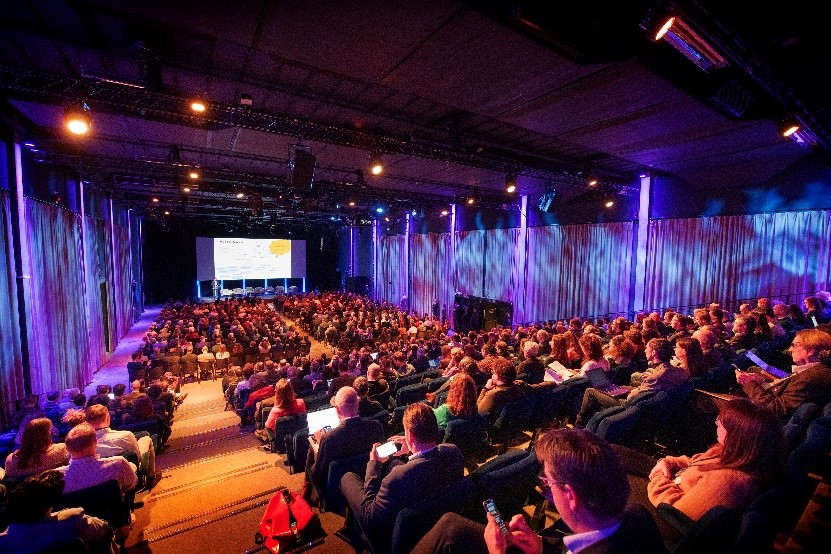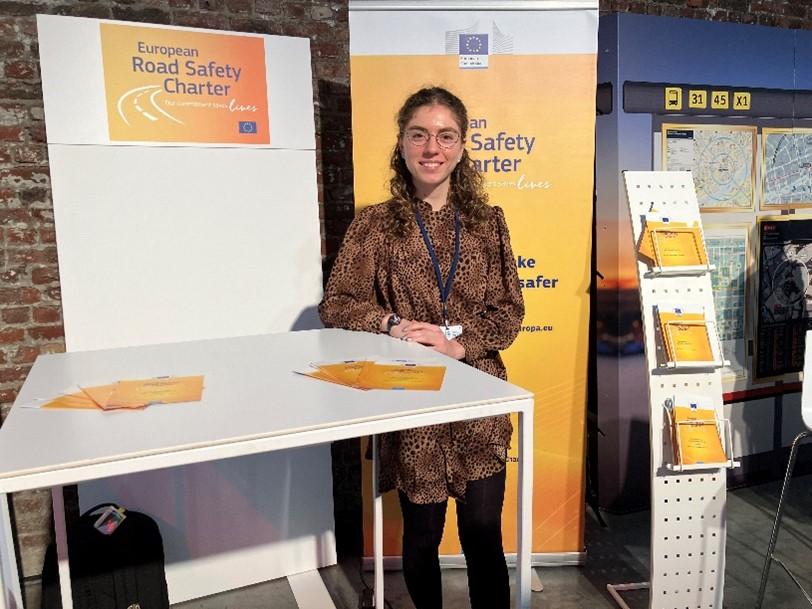The road to the mobility of the future at TRA
If we want to create the mobility of the future, we need to make it green, safe and inclusive. This message played a key role in the agenda of the TRA conference in Lisbon, Portugal. For four days, researchers, policymakers and entrepreneurs came together to discuss how the balance between these three elements should be created and maintained. Which challenges lie ahead for the different transport modes, how can smart technology help us to reach our goals, and what can we do to evoke a behavioural change towards inclusive mobility? These were only three of the many questions that were asked and answered in Lisbon.
It is not an easy task to summarize the challenges across the different transport sectors, as they all have their own needs. The aviation and maritime industries still rely too much on fossil fuels and are consequently now facing difficulties in availability. However, there is still a long way to go in order to implement hybrid and electric vehicles on a large scale. The (international) infrastructure needs to be adapted, better regulatory frameworks have to be created and confidence in new technologies needs to be built. The industries will have to work together across borders to create new business opportunities. Meanwhile, the rail industry is taking up the challenge to promote rail transportation as a cheaper and cleaner way to transport goods, which is currently still fragmented in the EU. The automotive industry is eager to come up with new ideas and technologies but often struggles with the shift from idea to practice. As in all the other industries, a better policy network framework is needed. However, they will also need to come outside their comfort zone and actively promote slow modes of travel. Because if everyone takes the train once a week, not only will our areas become greener, but the car drivers will face less congestion on the other remaining days.

Smart technology was introduced as a key element for making transport more sustainable, accessible, green and smart. Sounds promising, but what is smart technology, or more specifically, smart mobility, exactly? Smart mobility entails the use of data to smooth the different transport modes together and to place the needs and wants of the user in the centre. Three elements are crucial in order to implement this:
- Common data framework
- Adapted infrastructure
- Financial budget
Experts at TRA highlighted that smart mobility however should be seen as a means to an end, and not the solution itself. It is an opportunity to collaborate across different sectors in order to create fluent experiences that are end-to-end, flexible and reliable. But be aware, if the road user is not placed in the centre when implementing smart technology, the tool can also exclude them. But if used correctly, it can develop mobility for all where all the needs of all the road users are met in both urban and rural areas. Understanding why our current mobility plans are excluding people is key here. Is it our infrastructure, the technology needed to use the transport mode, or is it the mode itself? This way of thinking will also allow us to analyse new trends and how they can bring new forms of exclusion with them (think for example of the many E-scooters that transform into obstacles for blind people when placed on the pavement).
Different sessions at TRA however showed why it is so difficult to place the concept of mobility for all in the centre of policy making. Currently, it is investors and private entities who often have the power to shape the city, and mobility for all approaches is not profitable for them. It requires new investments, a long-term vision for both urban and rural areas, and flexible pricing options depending on the type of user, distance and area. The experts agreed: it is time we stop placing people in vulnerable positions and we start encouraging policymakers and planners to take back the wheel.

The European Road Safety Charter team was present at the TRA conference and received the opportunity to give a presentation to highlight the importance of sharing knowledge and experiences via the ERSC platform to improve road safety.
A look into the mobility agenda of cities and regions at the POLIS conference
The road to Vision Zero can only be built with the help of the many cities and regions in Europe. The POLIS Conference, organised by POLIS Network, invited mobility experts, practitioners and decision-makers to come together in Brussels to explore the challenges that are affecting urban mobility via brainstorms about hands-on safety solutions, the value of data and technology, trends in shared mobility, the role of co-creation and many more topics.
The session on hands-on safety solutions revealed several best practices from countries across the European region to improve road safety. One example came from a collaboration between the partners KfV, Consens and Radland Niederösterreich from Austria. They developed a pilot project on colourful road design and its impact on the driving behaviour of car drivers. Crossing points and main passages were highlighted with coloured and geometrical elements in order to create an optic narrowing of the street. As a consequence, people drove more slowly and carefully and were more eager to stop pedestrians.
Another study conducted by Cannon Cloud and Johannes Kasinger from Goethe University and Simon Heß from the University of Vienna showed that the introduction of shared e-scooter services caused an 8% increase in monthly accidents with injuries in six countries (Austria, Finland, Germany, Norway, Sweden and Switzerland). However, the research also demonstrated that infrastructure plays a key role: cities with extensive bike lanes did not experience this increase.
In East Birmingham in the UK, 38% of the car passengers did not wear a seatbelt. A more in-depth analysis pointed out that 80% of these people were of South Asian origin. The campaigns they created so far to promote seatbelt use were too standardized and many locals did not recognize themselves in them. As a consequence, So-Mo started a working group with the locals and developed a campaign specifically targeted at young people of South Asian origin. And the result was successful: 38% felt more emotionally connected with the tailored campaign. The study also showed that women still sympathize with campaigns featuring only male models while men did not experience the same feeling when seeing campaigns with only female models.

In the session “Gender Equal Mobility: beyond the vulnerable user's paradigm”, the speakers discussed how the transport sector can be more gender equal. E-scooter operators VOI and TIER both conducted research on gender equity in E-scooter use and found out that women are much less likely than men to use the scooter, and the numbers are even worse during nighttime. Only 3% of the women in the UK and 10% of the women in Germany felt safe using an E-scooter at night. 25% of the women mentioned being afraid of being stalked or followed, and 31% of the women did not want to be potentially forced to go into a dark parking place. Infrastructure can thus play a crucial role in improving safety feeling when using an E-scooter. The parking places of E-scooters should be easy to find, have enough lighting, be visible from the street and have CCTV.
However, in order to make transport more user-friendly for all genders, the transport workforce should take the lead. Currently, only 20% of the transport workforce in the EU are women, and the percentage is even lower at the management level. Only 15.5% of the ministers with transport portfolios across the EU Member States are women.
As the session on gender-equal mobility already highlighted, transport should be accessible for everyone, everywhere. This was also the theme of the session ‘just transition everyone – everywhere’. A presentation given by Mpact showed that only 18% of the people living in rural areas are able to use multiple modes of transport and too often need to rely on cars and bikes to go to their destinations. Even the most popular mode of transport for people without a car is the car: 17% have already tried carsharing, and 81% sometimes share a ride with others.
Research executed by MemEx showed the impact of poor mobility in rural areas: higher transport costs for the local population, higher chances for isolation and exclusion, more emissions, difficulties in attracting and retraining businesses and young families, and less balanced regional development. Public transport in rural areas should not only exist, but it should also be frequent, affordable, reliable and accessible for all.
The European Road Safety Charter was present at the Polis Conference with a stand in the exhibition area. This gave the Charter Team the opportunity to highlight the importance of the Charter to stakeholders, cities and policymakers from all across Europe.
Geographical coverage
